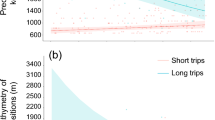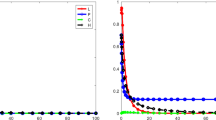Abstract.
Accumulating and maintaining sufficient energy reserves is critical for winter survival of birds. Because high fat levels are assumed to be associated with higher risk of predation, birds have been hypothesized to regulate their body mass as a trade-off between risk of starvation and risk of predation. Theoretical models of energy management in birds typically assume that predation risk is constant throughout the day. However, this important assumption has little empirical support, and there is some evidence suggesting that it might not always be correct and that predation risk may vary during the day. Because predation risk is a critical component of the predation-starvation trade-off, any change in its value through the day might have a profound effect on birds' optimal daily tactics of energy accumulation. We used a dynamic optimization model to investigate how changes in predation risk might affect birds' energy management decisions. Daily patterns of fat accumulation and feeding activity were predicted to change with predation risk in a manner consistent with previous models (lower mass gain and less feeding when predation risk is high). Our more counterintuitive results concern daily patterns of food caching and cache retrieval. When predation risk was assumed to peak at midday, birds were predicted to cache primarily in the afternoon and not in the morning even though predation risk was identical in the morning and afternoon. With other temporal patterns of predation risk, caching intensity was highest when predation risk was lowest. Surprisingly, the daily pattern of cache retrieval was predicted to be unaffected by daily patterns of predation risk: birds were always predicted to retrieve their caches primarily during the late afternoon with a small peak in the morning. Highest mortality was predicted with predation risk decreasing from morning to evening whereas lowest mortality was predicted with predation risk increasing from morning to evening. Our model helps explain large variations in observed daily patterns of energy management in birds and provides testable predictions that could help us understand the daily dynamics of predation risk and how birds should respond to it.
Similar content being viewed by others
Author information
Authors and Affiliations
Additional information
Electronic Publication
Rights and permissions
About this article
Cite this article
Pravosudov, V.V., Lucas, J.R. Daily patterns of energy storage in food-caching birds under variable daily predation risk: a dynamic state variable model. Behav Ecol Sociobiol 50, 239–250 (2001). https://doi.org/10.1007/s002650100361
Received:
Revised:
Accepted:
Issue Date:
DOI: https://doi.org/10.1007/s002650100361




